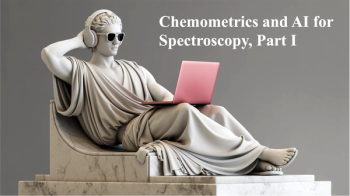
- Application Notebook-02-01-2016
- Issue 0
Analyzing Absorption of Wood Preservatives Using Micro X-ray Fluorescence
To optimize the mapping collection parameters, it is important to factor the size of the mapping area, the beam diameter, and the desired beam spacing. For this sample, the area being mapped is shown in red outline in Figure 2, approximately 50.4 x 3.5 mm.
Chemical treatment of wood has long been utilized to prolong the lifetime of the product. A 4 in. x 4 in. wood sample was treated on the outside with copper, which is used in many preservative formulations, and then cross-sectioned. Using micro X-ray fluorescence, the absorption depth of copper was imaged, and found to be relatively deep, but not uniformly distributed.
Wood is often chemically treated to preserve it from physical degradation and maintain its structural integrity against natural elements like fungus, insects, and moisture. The concept and practice of lumber treatment has been used for millennia. Early examples include the ancient Greeks soaking wood in olive oil, and the Romans brushing wood with tar to protect and prolong the life of the material. In modern lumber treatments, there are numerous processes and preservative chemicals that can be used, which are typically characterized by the solvent used to carry the preservative into the wood, for example water, oil, or light-organic solvents. Many preservatives, particularly those which are water-borne, utilize copper as a key constituent. They are usually dissolved into solution using chemical reactions, but have also recently been utilized by suspending micronized copper particles in an aqueous solution. These various preservatives can be applied to the wood using a number of different processes, such as steeping, brushing, pressure-assisted methods, or even integrating the preservative into the live plant's sap stream. The end goal of these processes is to create a deep and uniform absorption of the preservatives into the wood to ensure the effectiveness is maximized (1).
In this example, a sample of 4 in. x 4 in. wood was treated with a copper-based chemical on its surface. The sample was then cross-sectioned against the grain into a slice approximately one-half inch thick. The goal of this analysis was to assess how deep the copper-based solution has been absorbed into the wood by measuring copper using the micro X-ray fluorescence (micro-XRF) technique. Because the treatment is not visible to the naked eye (as there is no discoloration), spectroscopic methods relying on the visible light spectrum are not useful. The absorption depth can be easily determined by micro-XRF performing an elemental spectrum map of the cross-section, looking specifically for copper. Micro-XRF utilizes a micro-focused X-ray beam to generate characteristic X-ray energy lines, similar to that used in energy-dispersive spectroscopy (SEM-EDS). However, micro-XRF is a non-destructive measurement technique with superior sensitivity for higher-energy elements such as copper. Detection limits for copper are nominally <10 ppm for a single point measurement. In addition, micro-XRF generally requires very minimal sample preparation and operates under low vacuum, whereas other techniques may require extensive sample preparation, particularly for organic or biological materials.
Figure 1: Example of untreated wood with "dry rot."
For this analysis, the EDAX Orbis PC analyzer was used. The Orbis PC was ideal for this sample characterization because the X-rays are focused to nominally 30 µm in diameter using a mono-lithic hollow glass fiber bundle (a.k.a. poly-capillary optic). The scale of features on a 4 in. x 4 in. cross-section of wood cannot be fully imaged using SEM-EDS, as the beam diameter is too small to cover such a large area. Conversely, some "bulk" XRF systems have smaller apertures on the order of a few millimeters, which is too large and not capable of generating higher resolution images. The 30 µm beam diameter on the Orbis was the right size to get high image resolution, while also being capable of mapping a larger area in a relatively short amount of time.
To optimize the mapping collection parameters, it is important to factor the size of the mapping area, the beam diameter, and the desired beam spacing. For this sample, the area being mapped is shown in red outline in Figure 2, approximately 50.4 x 3.5 mm.
Figure 2: Montage image of wood cross-section sample, with mapping area highlighted in red. The wood sample has been treated with a copper micro-particle preservative.
The narrow area minimizes extraneous mapping time, but will still give a clear profile of the copper signal as a function of distance. The X/Y matrix, or the number of points collected in each axis, was 420 x 35 points, giving approximately one beam space (~30 µm) in between each collection point. Dwell time (per point) should be determined by the composition of the elements of interest, as trace elements require longer dwell times than major elements. However, it is important to remember that overall sensitivity degrades substantially when mapping because the acquisition time is much shorter compared to a longer single-point analysis. Using a dwell time of 500 ms per point, the total collection time was approximately 2 h.
The resulting images in Figure 3 below show the video image of the mapped area (3a), along with the imaged Cu (K) intensities displayed with thermal color scaling (3b). As expected, the Cu (K) is most intense near the outer edge of the wood with a maximum intensity of nominally 21,000 counts per second.
Figure 3a and 3b: Video image of the mapped area (top), and the Cu (K) spectral map in thermal scaling (below).
The distribution of copper is interesting because it does not show a smooth uniform distribution throughout the wood. Instead, Cu (K) "hot spots" are clearly evident, along with streaking normal to the rings of the wood. The hot spots tend to form right before (to the left) of the next tree ring, which is best shown in the total counts map in Figure 4.
Figure 4: The total counts map does not separate maps by energy, but instead represents the total count-rate at any given point. This clearly shows that the copper hot spots do not directly correlate with the tree rings.
The streaking patterns all appear to be against the grain, and instead of gradually decreasing towards the center, there is a relatively abrupt drop in Cu (K) intensities near the third and fourth ring from center. Beyond that point, the copper drops to trace levels, and at that point becomes dependent on the sensitivity of the instrument and the measurement methodology, for example, mapping with short dwell time versus a single point. Overall, it appears that the absorption of copper was relatively deep, but not uniform. Absorption appears to have been successful through the outer eight tree rings (out of about eleven), or approximately 2.8 mm.
The Orbis PC micro-XRF analyzer has been used to provide valuable information on the distribution of copper micro-particles absorbed into an unprocessed piece of wood. The copper preservative was absorbed relatively deep into the wood showing a pattern of absorption which appears to be dependent on the structure of the wood. Measurements using the Orbis PC micro-XRF analyzer were non-destructive, which preserves the sample for measurements using other techniques and requires minimal sample preparation. Other elemental measurement techniques typically require much more work to prepare the sample for analysis, particularly for biological and organic samples.
References
(1) S. Quarles, J. Kobzina, and P. Geisel, "Selecting Lumber and Lumber Substitutes For Outdoor Exposures," University of California, Division of Agriculture and Natural Resources, retrieved Jan. 11, 2016.
EDAX, Inc.
91 McKee Drive, Mahwah, NJ 07830
tel. (201) 529-4880, fax (201) 529-3156
Website:
Articles in this issue
almost 10 years ago
Vol 31 No 2 Spectroscopy February 2016 Application Notebook PDFalmost 10 years ago
The Elegra Humidifier: Uninterrupted and Maintenance-Free ICP Operationalmost 10 years ago
Miniature 60 kV, 1000 μA 12 W X-ray Sourcealmost 10 years ago
Trace Elements in Aqueous Solution with UltraCarry®almost 10 years ago
In-Field Measurements of Major Elements and Base Metals with Handheld LIBSalmost 10 years ago
Fluorescence Spectroscopy Detects Adulterated Honeyalmost 10 years ago
Failure Analysis of Packaging MaterialsNewsletter
Get essential updates on the latest spectroscopy technologies, regulatory standards, and best practices—subscribe today to Spectroscopy.




